Dizygoteka: species, care and reproduction

Dizygoteka is a plant with decorative leaves, which is quite rare among indoor flowers. It belongs to the Araliev family, in its natural environment it can be found in the forests of Australia and Oceania. The dizigoteka fell in love with flower growers for its extraordinary leaves.
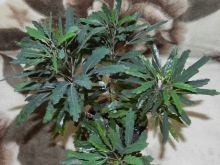

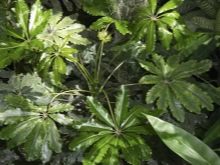
Peculiarities
Outwardly, the plant looks like a miniature tree. The leafless tall trunk ends with a wide crown reaching up to 4 meters in diameter. In nature, trees are 6–8 meters long, and houseplants can grow up to 2 meters. The stem over time becomes stiff, the more it resembles a tree trunk.
A characteristic distinguishing feature of the dizigoteca is its openwork elongated leaves. They really have a peculiar shape: rather large, divided into 7-10 segments, with sawtooth edges, which are joined together by a long petiole. The color of the leaf plates varies depending on the variety of the plant.
There are copper-red, different shades of green, in some cases almost black. Shoots are much lighter and may be speckled.


Variegated varieties are also observed. The plant has unremarkable, tiny flowers, collected in umbrella-shaped inflorescences. In the conditions of the room, the dizigoteka does not actually release buds.
The plant is considered poisonous, so its location should be at a considerable distance from the reach of children and animals.
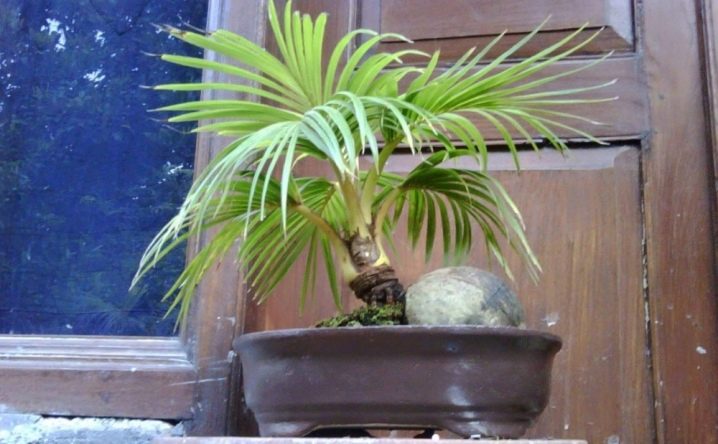
Types and varieties
In nature, there are many varieties and names of dizigotek, but only a few of them grow in artificial conditions. Elegantissima or graceful is the most popular type for cultivation in homes. It is a perennial plant with tree-like shoots, in most cases erect. The leaves are rather large, divided into several segments. They grow in a spiral line and are attached to the stem with long petioles, up to 40 cm.
The leaf plate can have from 4 to 11 lobes - elongated linear plates with jagged edges. All segments are of the same length and green color, but can also be colored. During flowering, which lasts from August to September, a large umbellate inflorescence is formed, consisting of small, unsightly, pale green flowers.

An elegant dizigoteca blooms only in nature, and at home, buds do not appear.
It is worth getting to know the most common varieties of this species, such as:
- "Bianca", having a small number of lobe segments (in most cases there are only 3), leaves of a deep green tone with yellowish veins and a whitish border;
- "Gemini", a distinctive feature of which are not very wide oval-shaped leaf plates;
- "Castor" very similar to "Bianca", the difference lies in the absence of edging.
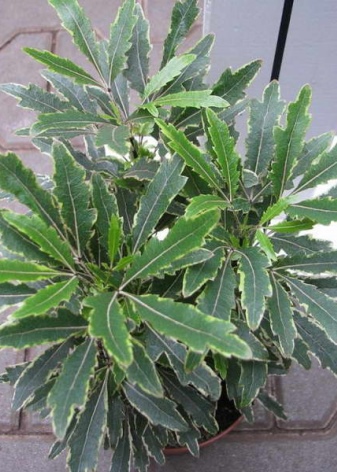
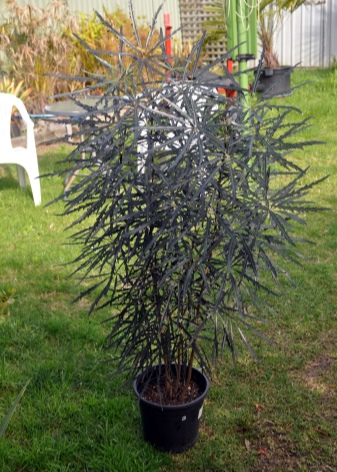
Veitch's dizigoteka is very similar to elegantissima, the same tree-like shrub with green foliage. The difference lies in the shape of the edges of the leaf plates, here they are more rounded, wavy. Dizygoteka Kerkhova is similar to the previous variety, but has a paler foliage color.
Gracillima is the most squat type of dizigoteka. The leaf plates are wide with wavy edges. The tone of the leaves is green.
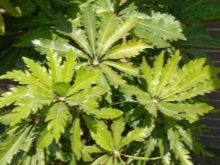
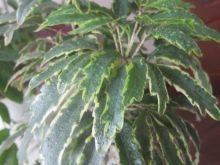
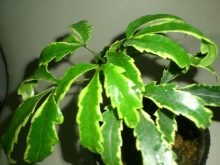
Home care
Many growers do not grow dizygotek, because they consider it capricious and very demanding in terms of keeping conditions.But the efforts made are worth it, the tree will certainly thank you with its delightful, extraordinary appearance. There are several factors to consider when caring for a plant.
- Lighting needs to be created bright, but always diffused. Therefore, it is better to shade a little from direct sunlight. In winter, you need to organize additional lighting.
- The location in winter must be light; for the plant, you need to choose the most illuminated window sill. In the summer, the dizigoteka grows remarkably outdoors, but nevertheless, the plant should be protected from the scorching sun rays. The plant does not tolerate being close to heating systems or heaters, dry air is destructive for it.
- The temperature in the warm season is optimal around +20 degrees, in the cold period the plant feels good at + 16– + 18 degrees. It is necessary to ensure that the temperature does not drop below +15 degrees, otherwise the plant will hurt.
- Humidity is an important condition for the well-being of the dizygoteka, therefore it needs regular spraying, especially during the heating season. And also to maintain the humidity level in winter, you can put expanded clay or moss on a pallet and water it constantly.
- Watering the flower needs to be organized abundantly, but it is not necessary to allow waterlogging, as well as drying out of the substrate, which has a bad effect on the condition of the plant. Water must be taken well-separated, at room temperature. With the onset of autumn, the number of waterings is significantly reduced. In winter, the dizygotek is very rarely moistened, only to prevent the soil from drying out.
- Top dressing is used only in the summer; for this purpose, fertilizers are used for plants with decorative leaves. The rest of the time, you do not need to fertilize the flower.
- Pruning is done to give the tree a beautiful look. Since the plant is small-branched and sheds the lower leaves as it matures, it becomes like a palm tree. The deep pruning procedure inhibits active growth and promotes the renewal of the dizigoteca. Shoots are cut at the beginning of spring; when an adult flower is shortened, new stems begin to grow from the base of the stem.
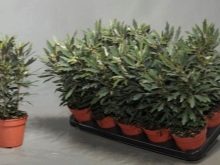
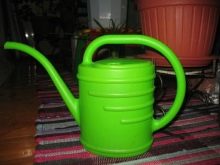
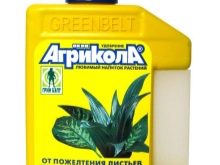
The transplant is carried out in the spring, once every 1-2 years. It is better to buy a substrate ready-made, a specialized soil for dracaena is optimal.
You can also prepare yourself from two parts of sod land, one part of sand and the same amount of humus. To add more looseness to the soil, both purchased and home, you can add charcoal or vermiculite to it. The bottom of the pot must be covered with high-quality drainage.
When transplanting young plants, a capacity is selected slightly larger than the previous one, and adults can be planted in the same pot, replacing only the substrate. You need to be very careful with the roots to avoid damaging them. Old soil is washed off the roots with a weak pressure of warm water, and not with your hands. For mature flowers, it is enough to replace only the upper earthen layer. To make the dizygotek more decorative, several plants can be planted in one pot.

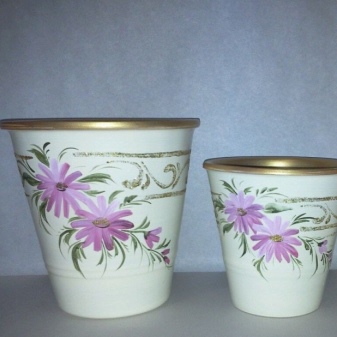
Important! When working with a plant, it must be remembered that its parts are poisonous, so the use of gloves is mandatory.
Reproduction methods
It is quite problematic to dissolve a dizygotek at home. Reproduction is carried out in two ways.
- Cuttings. Cuttings are taken from the top of the shoot about 10 cm, with 3-4 leaves. Since they take root hard, they are certainly subjected to treatment with special preparations that accelerate root formation. After that, they are placed in a mixture of equal parts of peat and sand. The containers are moistened, covered with polyethylene or glass and placed in a well-lit place. A prerequisite is maintaining the temperature at + 20– + 25 degrees. After the formation of seedlings, the shelter is removed, the sprouts are provided with high humidity and the air temperature is gradually reduced.
- Seeds. Seeds for seedlings are sown at the end of winter. Previously, it is necessary to withstand their root-forming preparations, such an action activates germination and strengthens the sprouts. Seeds are sown into a light substrate of peat and sand, sprinkled with earth on top, but in order to slightly deepen the grains. Dishes with seedlings are placed in a warm place with a temperature of + 20– + 24 degrees, you can cover it with glass or film (with this approach, regular ventilation is necessary).
When the second leaf is formed, the sprouts are dived by transferring them into pots and the temperature is lowered to + 18– + 20 degrees.
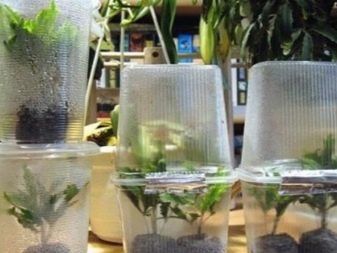
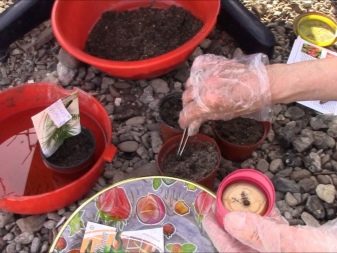
Diseases and pests
Like other plants, dizygoteka can be affected by diseases and pests. The causes of disease are mainly due to improper care. To resolve these issues, containment conditions need to be adjusted, namely:
- leaves wither, look drooping - excessive moisture; it is necessary to let the soil dry out and then adjust the irrigation regime;
- leaf plates dry out - lack of moisture or the location is not suitable (too lit); again, you need to adjust the number and volume of watering, or try to rearrange the plant to another place and slightly lower the air temperature;
- leaf plates turn pale and decrease in size - insufficient amount of nutrients; this problem can be solved by replacing the substrate or increasing the dose of feeding; leaves can fade from too bright sun hitting the plates, in this case the plant should be rearranged and shaded from the sun;
- the leaves have become dark, wilted - the air temperature is too low; it is necessary to establish the desired temperature regime;
- leaf plates are covered with white bloom - water is too hard for irrigation; the liquid must be defended for at least 12 hours or melt water must be taken for humidification;
- the plant sheds leaves - too dry air, unsuitable temperature, the presence of drafts or excessive proximity of heating devices; it is necessary to adjust the indoor climate.
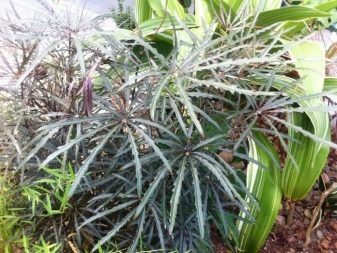
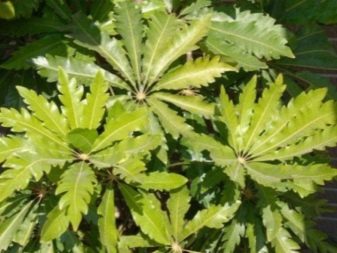
When the flower is properly cared for, and the foliage is still drying, it is necessary to immediately cut off the remaining healthy shoots and try to root them. It is imperative to inspect the sections for any darkening and traces of disease. The cut stems must be soaked in a phytosporin solution and planted in a new substrate.
If the old pot is used, it must be disinfected without fail.
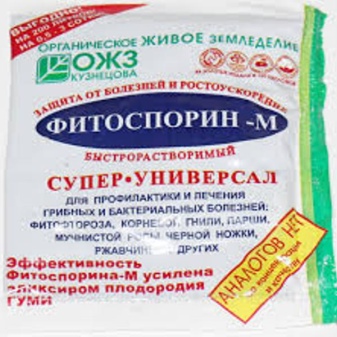
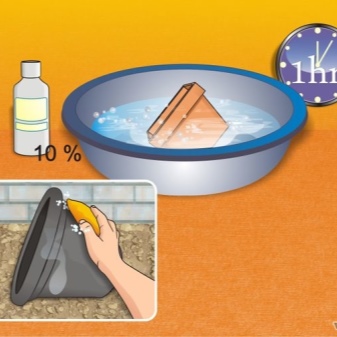
You can try to revive the whole plant. For this, all diseased shoots are removed, the earth and dizygotek are treated with "Fitosporin". The flower is placed at a distance from other plants, and after a week the treatment is repeated. It is advisable to fertilize with potassium humate, the drug will somewhat strengthen the tree.
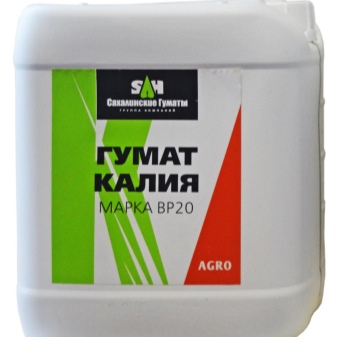
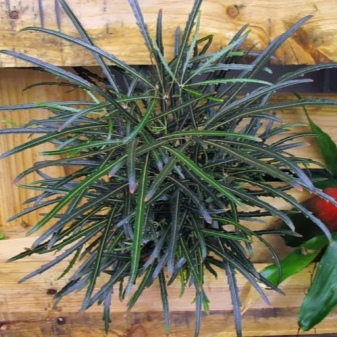
Dizygoteka lends itself to attack by scale insects, thrips and spider mites. The fight against them comes down to washing the plant with soapy water, and if there are a lot of insects, insecticides are used. Dizigoteka requires attention and needs some care, but by providing it with the necessary conditions and care, you can get an unusual, exotic beauty into your home.
Tips for caring for a dizygotek are given in the following video.























The comment was sent successfully.